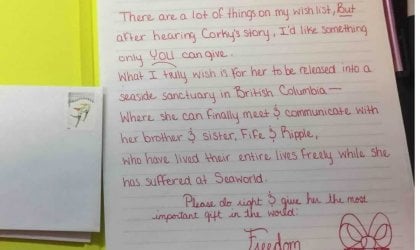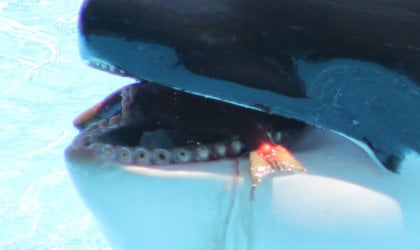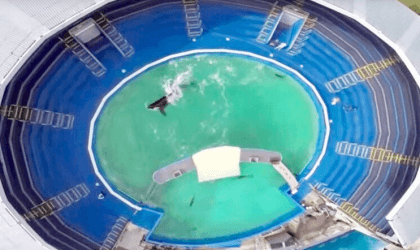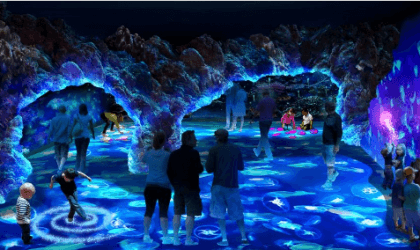Unna, an 18-year-old orca imprisoned at SeaWorld San Antonio, died this week after long suffering from the fungal infection candida. She was the daughter of Tilikum, an orca kept at SeaWorld Orlando who was the subject of the documentary Blackfish.
BREAKING: Young orca, Unna, has just died at #SeaWorld after suffering from a fungal infection for months. pic.twitter.com/sKEalGJ5ax
— PETA (@peta) December 22, 2015
Born in captivity, Unna is the 38th orca used by SeaWorld to die far short of how long she was expected to live, although it is, in fact, hard to call it “living” when her “life” consisted of being taken away from her mother just before her sixth birthday, being impregnated when she was only 8 years old before giving birth to a stillborn calf, and being so deprived of enrichment and the opportunity to engage in natural behavior that she obsessively picked at the paint on the bottom of SeaWorld’s show pool floor until her face became badly injured.
An 18-year-old killer whale, #Unna, died on Monday after a months-long illness at #SeaWorld https://t.co/9vhJWvnQcf pic.twitter.com/AMehn3wzMr
— CNN (@CNN) December 22, 2015
While the infection that probably killed this orca is common in captivity, there is no evidence to suggest that the same is true of orcas in nature. PETA is calling on SeaWorld to stop sentencing orcas to miserable lives of deprivation in dismal tanks and start building coastal sanctuaries.
Orcas in the wild can live up to 50 years, on average, and have been known to live more than 100 years. Unna’s life was not even half as long as it should’ve been, and she never knew what it felt like to swim for miles in the ocean.
Thirty-eight dead orcas is 38 too many.
What You Can Do
No orca deserves to live or die in captivity. Please tell SeaWorld to stop breeding orcas and retire the remaining orcas at its park to a seaside sanctuary.




